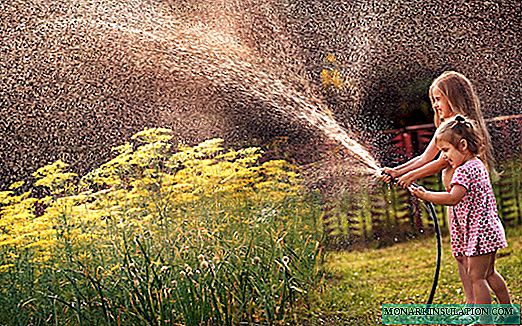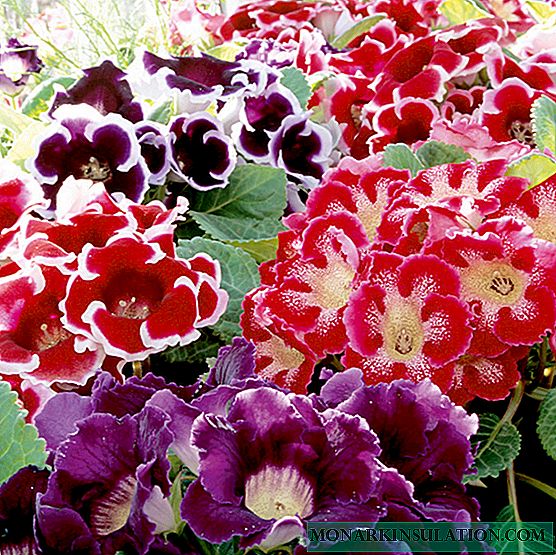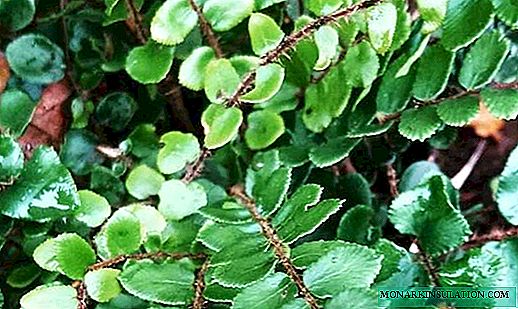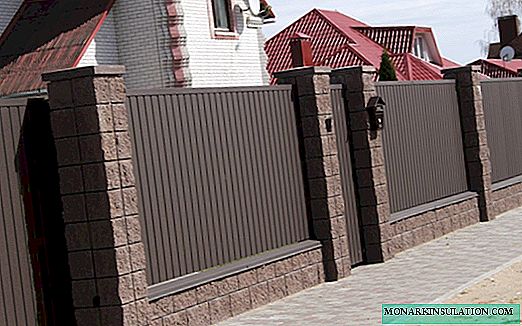
A summer cottage is always a small private world, and it does not matter whether it is a gingerbread house with a pink flower garden, a large cottage with a swimming pool or an ordinary village house with three rows of vegetable beds. We love our country corner, we try to protect from prying eyes and uninvited guests, therefore, we establish a fence around our protected area. There are many options for fencing, but today we will consider in detail how to create a fence from a metal profile with our own hands, we will cover all technological stages and analyze possible errors.
Why is a metal profile so good?
Why is it worth paying attention to a metal profile? It's simple: it is a relatively inexpensive material, strong, durable, easy to install and process.

Any person who can handle a drill, a grinder and a welding machine can cope with the installation of a fence from a metal profile
There are several options for the material, therefore, when purchasing it, you should consider the labeling. Mark "C" means "wall". The following varieties are suitable for the fence:
- "C8" - sheets with a width of 1 m 15 cm with a minimum height of the trapezoid profile; the cheapest option;
- "C20" - sheets 1 m 10 cm wide, more rigid, strong, wind-resistant; suitable for everyone who loves a competent balance of price and quality;
- "C21" - sheets 1 m wide, convenient for drafting projects and schemes; have the maximum height of the ribs, so the most durable.
In addition to dimensions, it is necessary to pay attention to the type of polymer with which the profile is coated, and the thickness of the zinc layer.

The combination fence on the foundation with supports made of red, yellow or white silicate brick is very popular among owners of country cottages.
The modern metal profile has a wide color gamut, so it can be used to decorate the territory. For example, to fence a site with a red brick cottage, a terracotta, brown or red fence is suitable. Some types of profile sheets have an original carved top, which makes the fence not so boring.

To increase sales, many manufacturers regularly increase their product range by expanding their color base. When buying, be sure to take a look at the variety of shades offered.
List of required materials and tools
To build a metal fence, you will need:
- Sheets with a thickness of at least half a millimeter with a rib height of 20 mm. The amount is easy to calculate by dividing the total length of the proposed fence by the width of one sheet.
- Supports for fastening the transverse beams - lag. It can be wooden or brick poles, but profile pipes are most often used. Optimum pipe parameters: section - 60mm x 60mm, wall thickness - 2 mm or more. The number of support pipes can be different, it depends on the distance between them. Do not forget about the additional supports for the device gates and gates.
- Lags - cross bars for fastening metal sheets. Profile pipes are also traditionally used, but of a smaller section - 40mm x 20mm. We multiply the number of estimated spans between the posts by two — we get the total number of lags, or we also double the length of the fence.
- Pillar concreting kit - cement, sand, gravel.
This is the main material that must be supplemented with fasteners, because installation of a metal fence is impossible without fixing elements. As fasteners, roofing screws with colored hats and rubber washers are ideal.

Many details for the construction of a metal profile fence can be replaced with suitable ones, for example, instead of a profile for a log 40mm x 20mm, you can use a corner 40mm x 40mm

Hats of roofing self-tapping screws are specially painted in different colors so that they do not stand out against the background of colored metal tiles
The toolbox includes:
- for marking - pegs, twine, tape measure;
- for the installation of poles - drill, sledgehammer;
- for fixing logs and sheets - grinder, level, welding machine, drill.
Before starting work, you should check the serviceability of the power tool and the availability of all materials so that during the installation process you do not lose time searching.
Phased Erection Technology
Having divided the entire process of installing a fence from a metal profile into several stages, you can calculate the approximate time for completion of work and plan your work day more efficiently.
Step # 1 - Drawing and Layout
The approximate length of the fence is easy to calculate, focusing on the size of the summer cottage, but it is better to take a tape measure and carefully measure the distance, methodically recording all the numbers on a piece of paper. As a rule, a fence is erected around the entire territory, but there are exceptions when, say, a hedge is planned to be planted at some site. The depth of the pits for the supports sometimes reaches one and a half meters, so it is necessary to take into account the communications running underground.
The installation locations of the posts are marked with pegs, and the twine will help to line them up in even rows. The distance between the pegs should be equal to two sheets of a metal profile, that is, a little more than two meters. These are optimum sizes for the fence to be solid and stable. Ideally, after all measurements, a detailed diagram should appear on the sheet indicating the installation location of the proposed fence with the designation of all poles and material calculations.

As signal pegs, you can use long trimming boards, bars, sticks - the main thing is that you can easily navigate them

For convenience, the diagram should indicate the dimensions of all the materials used: the width of the sheets of the metal profile, the cross-section of the support pipes, cross beams
Step # 2 - installation of support pillars
Signal pegs indicate where it is necessary to dig a hole for each support column, in our case, a profile metal pipe with a cross section of 60 mm x 60 mm. The pipe can be placed in the ground in three ways: screw it in (in this case it does not fit), hammer it with a sledgehammer (also a very dubious method, it can be used only at the final stage), or dig a hole under the pole, and then concrete it. The concreting option is the most successful and easy to do.

A drill for arranging holes can be borrowed from friends or rented at a construction company for a small fee
In order to make a hole of the required depth, it is better to use a drill - there will be less free space around the pipe. When digging with a shovel, the pit will be too wide, and a sufficiently large area will have to be concreted.

The result of drilling with a drill is a deep and accurate hole, optimally suitable for installing narrow metal pipes and further pouring with concrete mortar
The depth of the hole should be approximately 1/3 of the height of the support. Concreting the base, we prepare the formwork from a sheet of roofing material or sheets of plywood, set the level of the pipe and fill it with mortar to the full depth. If time permits, it is possible to make concreting in two runs - first up to half of the hole, then the rest.

For the preparation of concrete mortar, cement, sand and gravel are traditionally used in the proportions indicated on the packaging with cement
Many summer residents along the fence or in some parts of it install lighting. In this case, simultaneously with the fence device from the metal profile, you can dig a trench for laying the power cable.
Step # 3 - mounting the crossbeams
When the concrete fixing the support pipes has “matured”, you can proceed to fasten the transverse crossbeams - the lag, which are the guarantee of the strength of the future fence. Profile pipes with a cross section of 40 mm x 20 mm are the most versatile in this role - not very massive and heavy, at the same time durable and able to support the weight of metal sheets.
Fencing lags in the fixed state are two parallel rows of profile pipes. The bottom row is fixed at a height of 30-35 cm from the ground, the second - 20-25 from the upper end of the support. To fasten the lag, use bolts or welding. In order for the fasteners and the surface of the metal elements to last longer, after installation, they must first be carefully primed and then painted in a color in harmony with the profile sheet. Two layers - primers and paints - protect the metal from moisture, respectively, from the appearance of corrosion.

All logs are mounted on one side of the support pillars, usually this is the front side facing the street. Thus, the supports are visible only from the yard.

Logs and support posts must be treated with a special primer and metal paint, for example, Rostiks and Miranol from the Finnish company Tikkurila
Step # 4 - securing the metal profile sheets
The final stage of the installation of the fence is the installation of metal sheets. Many people make the mistake of starting work from the corner, when it is the turn of the last sheet, it turns out that there remains one more small unfilled segment near the gate or gate. Accordingly, it is covered with a small width piece that looks like a patch. It is better to plan in advance how to make a fence from a metal profile so that it looks holistically and accurately. To do this, work begins from the gate (gate), moving in opposite directions. If in the area of corners you have to use profiled scraps, no one will notice this.

During the installation of profiled sheets, it is necessary to observe the connection technology: each subsequent sheet is fixed with an overlap of 1-2 waves (ribs)
When mounting sheets, it is necessary to use a level and a tape measure so that the top edge is perfectly even. Screws are screwed with a drill, the remaining material is removed using a grinder or scissors for metal.

The finished fence from a metal profile without decorative elements looks neat and strict, and its height hides almost the entire suburban area
Video clips with examples of installation work
Video # 1:
Video # 2:
Video # 3:
After complete installation of the metal profile, the gate leaves or the gate are hung. One of the convenient door options is sliding, for which profiled sheets can also be used. Painting the fence is not needed, as the material is sold fully finished. High-quality installation of the fence guarantees its long-term service.











